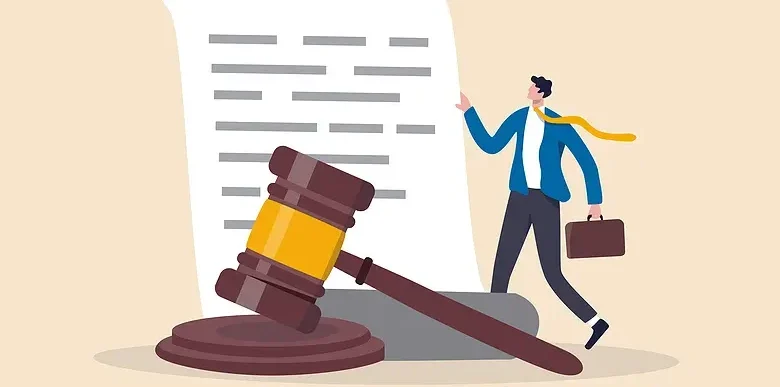
In the legal world, information is everything. From contracts and court filings to discovery materials and internal correspondence, legal professionals handle a constant flow of sensitive data. With so much confidential information moving through law firms, corporate legal departments, and government agencies, ensuring that this data is protected is not just a matter of good practice it’s an ethical and legal obligation. One of the most essential tools for protecting sensitive legal information is document redaction.
Document redaction, at its core, is the process of permanently removing or obscuring specific information within a document before it is shared outside its intended circle. In the legal industry, this often means eliminating client names, financial details, privileged communications, or personal identifiers from records before those records are submitted to a court, disclosed to opposing counsel, or made part of the public record. Redaction helps safeguard privacy, prevent misuse of information, and ensure compliance with a wide array of regulations governing the handling of sensitive data.
The High Stakes of Data Protection in Legal Work
Legal documents often contain a blend of public and private information. For example, a contract filed in court may include terms that are part of the public proceeding, alongside business secrets that must remain confidential. Similarly, discovery materials can hold thousands of pages of data, much of which might include personal details about individuals who are not parties to the case but whose information is swept up in the process.
The failure to properly redact such information can have serious consequences. Courts have sanctioned law firms and in-house legal teams for accidentally disclosing privileged material. Clients may lose faith in their legal representatives when mistakes occur. And in the age of digital media, a single slip-up can quickly go viral, damaging a firm’s reputation in ways that can take years to repair.
In addition to reputational harm, legal professionals face regulatory risks. Privacy laws such as the General Data Protection Regulation (GDPR), the California Consumer Privacy Act (CCPA), and various sector-specific rules impose strict obligations around data handling. Redaction is one of the key methods legal teams use to ensure compliance with these regulations when sharing documents beyond their walls.
Challenges of Manual Redaction
For many years, redaction in legal settings was done manually. Attorneys or paralegals would review documents line by line, applying black boxes or other markers to cover sensitive details. In physical documents, this might have meant using permanent markers; in digital files, it often involved basic software tools to overlay shapes or colors. While these approaches could work in small cases, they became impractical as the volume of data grew and the complexity of cases increased.
Manual redaction is not only time-consuming but also error-prone. A simple oversight missing a name buried in a footnote or a number hidden in a table can lead to unintentional disclosure. What’s more, many traditional redaction methods only mask information visually rather than removing it entirely from the underlying file. This means that someone with technical knowledge could recover the “hidden” data, defeating the purpose of redaction.
The legal industry recognized that it needed more reliable solutions to meet the demands of modern practice. That’s why so many firms and legal departments have turned to technology designed specifically to help them handle these tasks with greater precision and efficiency. Today’s advanced tools make it far easier to redact legal documents at scale, ensuring that sensitive details are fully removed and not just hidden behind a digital black box.
How Technology Enhances Redaction in Legal Practice
Modern redaction tools are built to meet the unique needs of legal professionals. These platforms go beyond simple visual masking to ensure that data is permanently deleted from the document’s code. This means there’s no hidden text that can be revealed by changing formatting or using editing tools. The information is truly gone.
Another important advantage of advanced redaction technology is the ability to automate parts of the process. For example, legal teams can create templates or rules that automatically identify and flag common types of sensitive information, such as Social Security numbers, dates of birth, or client names. This not only speeds up the redaction process but also helps ensure consistency across documents and cases.
Integration with other legal technology platforms is another key feature. Many redaction tools now connect directly to document management systems, e-discovery platforms, and case management software. This means that redaction can become a seamless part of the legal workflow rather than an isolated step. Documents can be reviewed, redacted, and shared without leaving the secure environment that the firm or agency has already put in place.
Redaction as a Safeguard for Client Trust
Clients expect their legal representatives to protect their most sensitive information. After all, legal matters often involve some of the most personal, private, and high-stakes issues in a person’s or company’s life. Whether it’s a divorce proceeding, a business acquisition, or a government investigation, clients entrust legal professionals with data they may not share with anyone else.
By using reliable redaction tools and processes, law firms and legal departments can demonstrate that they take this responsibility seriously. Proper redaction helps ensure that only the necessary information is disclosed, and nothing more. It protects clients from unnecessary exposure and helps prevent harm that can come from data falling into the wrong hands.
Moreover, strong redaction practices reinforce the integrity of the legal system. Courts, regulators, and opposing counsel must be able to trust that the documents they receive have been handled properly. When all parties follow sound redaction protocols, it supports fairness, transparency, and respect for privacy in legal proceedings.
The Future of Redaction in the Legal Industry
As legal work continues to become more digital and more data-driven, the importance of effective redaction will only grow. The future will likely bring even smarter redaction tools, powered by artificial intelligence and machine learning, that can identify sensitive information based on context as well as keywords. These systems may even provide predictive suggestions, helping legal teams spot risks they might otherwise miss.
Legal professionals will also need to keep pace with evolving data privacy laws, which are becoming more complex and stringent worldwide. Redaction will remain a central part of the toolkit for meeting these obligations and upholding the standards that clients and courts expect.
Ultimately, document redaction is about more than just blacking out lines on a page. It’s about protecting rights, safeguarding reputations, and ensuring that the legal industry lives up to its responsibility as a guardian of privacy. With the right tools and a commitment to best practices, legal professionals can continue to meet this challenge with confidence.



